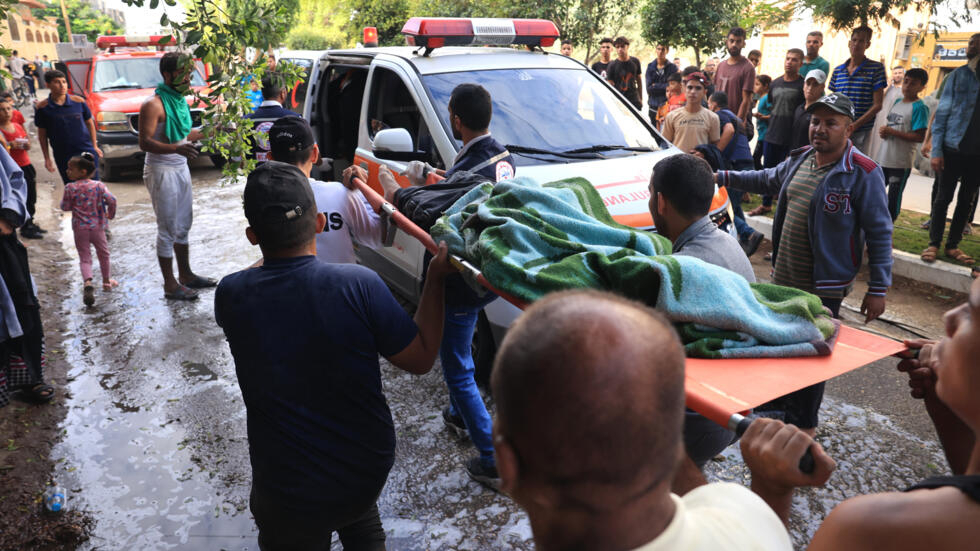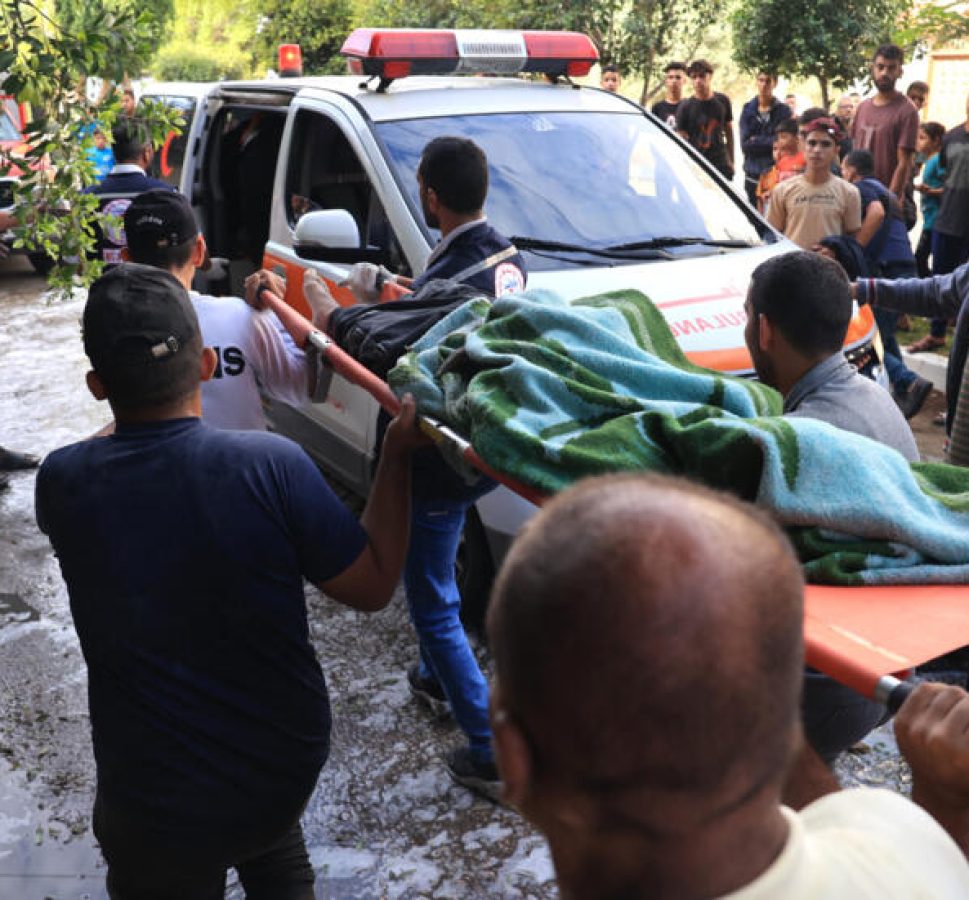
For hours and hours, Moen Abu Aish digs through the rubble of demolished homes to find survivors of Israeli airstrikes, toiling in a vast and desperate search complicated by the shortage of critical supplies and the sheer scope of destruction across the Gaza Strip.
Even as rescue worker Abu Aish, 58, and his colleagues struggle to pry lifeless bodies from the concrete and twisted metal where residential towers once stood, the death toll keeps rising. Gaza’s Health Ministry has reported that Israel‘s bombardment – launched after Hamas mounted a bloody, unprecedented attack on Israel on Oct. 7 – has killed more than 2,700 Palestinians, many of them women and children.
But far more Palestinians have been killed than have been officially reported, with 1,200 people, among them some 500 minors, believed to be trapped under the rubble awaiting rescue, or recovery, health authorities said. They based their estimates on distress calls they received.
“So many times medics say they hear victims scream but they cannot do anything about it,” said Mohammed Abu Selmia, general director of Shifa Hospital, Gaza’s biggest medical center.
The untold scores of victims buried beneath destroyed buildings shed light on the struggles of rescue teams in Gaza trying to save lives, while cut off from the internet and mobile networks, running out of fuel and exposed to unceasing airstrikes.
Israel imposed a siege on Gaza after the Hamas attack, severing the crowded strip’s access to water, power and fuel. Health authorities have warned that without humanitarian aid, hospitals and emergency services will soon break down. Hospitals running on backup generators say they have enough fuel for another day or two at most.
“The destruction is so intense, there are hundreds of dead under the rubble as we speak,” said Mahmoud Basal, the spokesperson for the Palestinian Civil Defense, which provides emergency service, his voice cracking as he fought back tears. “Where are the Arab countries? Where is the rest of the world? We are begging you, please, save us from this madness.”
At dawn Monday, Israeli warplanes struck the headquarters of the Civil Defense in Gaza City, killing seven paramedics as they prepared for a rescue mission, the Interior Ministry said. In widely shared videos of the aftermath, medics, shell-shocked and exhausted, crouched on the back of their blood-smeared ambulance with their heads in their hands.
“They targeted a center for ambulances,” one of them cried out, his voice frantic. “There are no weapons. There are no militants. There is nothing, nothing but civilians.”
The Israeli military did not immediately comment on the airstrike but has alleged in the past that Hamas militants use hospitals and rescue services as protective cover. It says it only targets sites and infrastructure used by Hamas and other militant groups.
Since the start of this war, 10 other medics have been killed on the job, the Health Ministry said.
“I’m terrified all the time, of course I am. I’m human,” Abu Aish said from Al Awda Hospital in northern Gaza, where doctors had refused an Israeli military order to evacuate earlier this week. “I see the worst things you could imagine.”
Like most medics, Abu Aish has spent the past days in the hospital’s ambulance bay, sleeping a few hours before returning to his grueling work. The massive blasts ripping through the northern Jabaliya refugee camp where he lives have been bad enough, he said.
What made them worse was not knowing how his loved ones fared.
Since Israeli bombardment destroyed two of Gaza’s three main lines for mobile communication last week, he hasn’t spoken to his family in five days.
“I miss them so much it hurts,” he said of his seven kids and 10 grandchildren. “But this is my mission. I respect it.”
At the hospital, distress calls follow the nearby thunder of explosions. Abu Aish drives as far as he can in the ambulance and jumps out when the roads buckle so badly they cannot be used. Rushing in the opposite direction of panicked families, he and his team arrive by foot to ravaged homes with little more than flashlights, shovels and other amateur tools, like pickaxes, saws, backhoes and blowtorches to cut metal bars.
The rescue crews in their bright vests and white helmets largely lack excavators, ladders and heavy machinery – the outcome of a blockade imposed by Israel and Egypt in 2007 to prevent Hamas from digging tunnels and rearming itself. Often Abu Aish uses his bare hands to sort through chunks of concrete mixed with residents’ belongings and personal mementos.
But as the rescuers work, they hear bombardment crashing in the distance. Another block of homes, flattened. More people who need their help, urgently.
Residents say it often takes rescue crews many hours to reach the site of an attack and search for victims. By that point, the chances of finding additional survivors are slim.
Ali Ahad, a 37-year-old resident of Gaza City, said that when airstrikes leveled the residential building next door, rescuers never came.
He and his friends sprinted outside in their slippers, sifted through the rubble and struggled to lift men and women coated in blood out of the ruins with blankets. When they saw an ambulance racing down the street to Shifa Hospital they chased it, pounding on its windows to make it stop so they could squeeze their neighbors inside.
“You have people like us using our hands and we have zero experience doing such things,” he said. “There is no infrastructure. There is no capacity.”
Rescuers say they try to save as many lives as they can. But at any point, they may have to save themselves.
Among the 10 medics killed over the past week were four workers with the Palestinian Red Crescent. Airstrikes last Wednesday slammed into their ambulances in two different places.
Three of those killed that day had been waiting to evacuate civilians in Jabaliya. “I was traumatized by that loss,” said their colleague, Salem Abu Al-Khair. As he spoke from the ambulance center, the roar of airstrikes could be heard.
“Even during this interview we are being bombed,” he said. “This is the extent of the danger.”
Good news is rare for Gaza’s medics. On Thursday, after airstrikes hit Jabaliya, Abu Aish found a mother hugging a small child under the rubble. The mother had been killed, along with the rest of the family members in the collapsed building.
But the child, a boy no more than 3 years old, was alive.
Abu Aish pulled him out of the rubble and took him to the ambulance. He was covered in dirt but completely healthy, he said.
“Those moments give me the will to carry on,” he said. “That’s my work. I never want to let one child like that die.”






